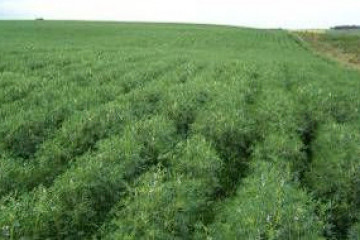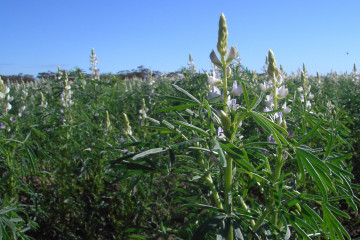Lupin
Lupin is the largest pulse crop grown in Australia, having a strong domestic as well as export market. There are two types of lupin grown in Australia – Australian sweet lupin and albus lupin – which have different growth requirements, markets and end-uses. The main type grown in Australia is the Australian sweet lupin (Lupinus angustifolius), which is also known as narrow-leaf lupin, the vast majority of which is grown in Western Australia. A smaller area of albus lupin (L. albus), is grown in all three Australian grain growing regions.
Choosing the right variety for the right paddock is central to incorporating lupin into a cropping rotation to improve profitability and productivity. The resources on this page will help to develop a crop management system suited to your farm and will assist in identifying and solving problems that may occur. Pulse Australia encourages growers to seek out an accredited pulse agronomist who is familiar with pulse production your district and to engage a Pulse Australia member to assist with marketing your grain.
Best management guide
Variety selection
The variety management packages (VMP) below provide information about each variety's yield performance, disease resistance and susceptibility, agronomic traits (such as lodging) and suitable target markets.
| Albus lupin
|
Australian sweet lupin
|
|
|
|---|---|---|---|
|
|
|
Planting guides
- Pulses: Inoculation
- Pulses: Wide rows and stubble retention
- Pulses: Residual herbicides and weed control
- Pulses: Minimising frost risk



